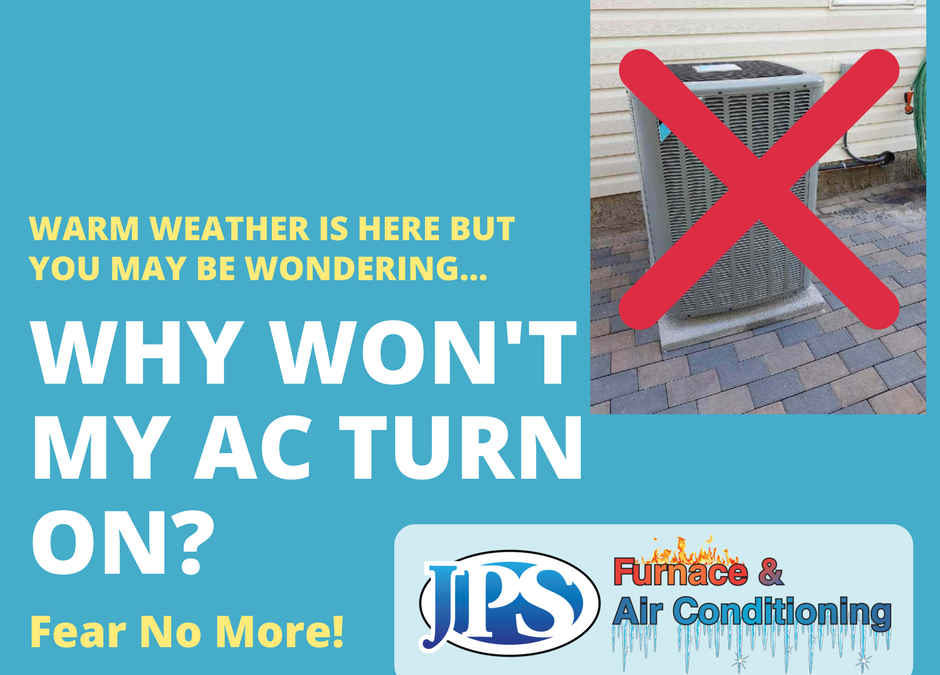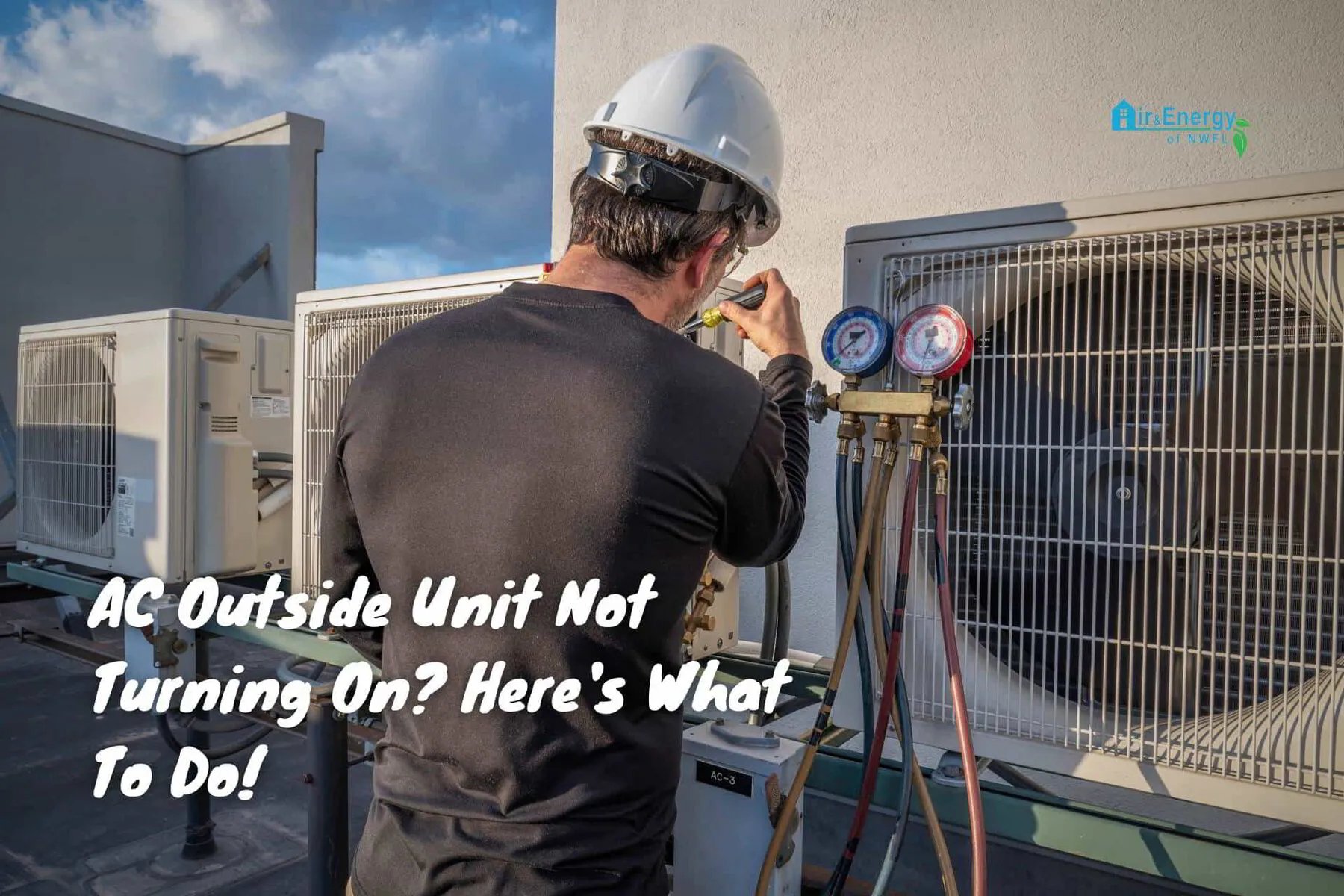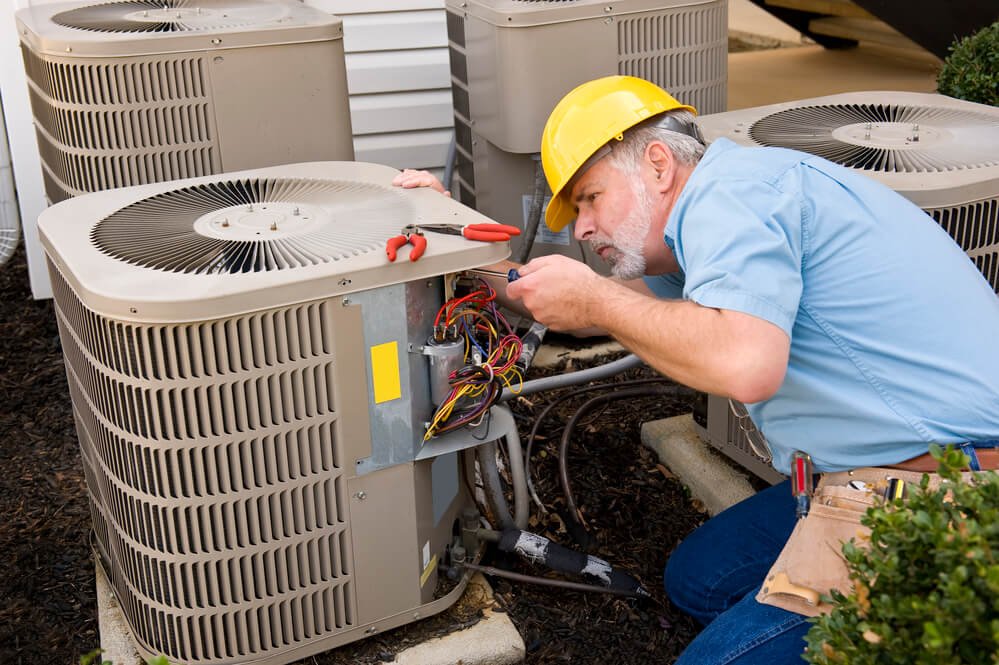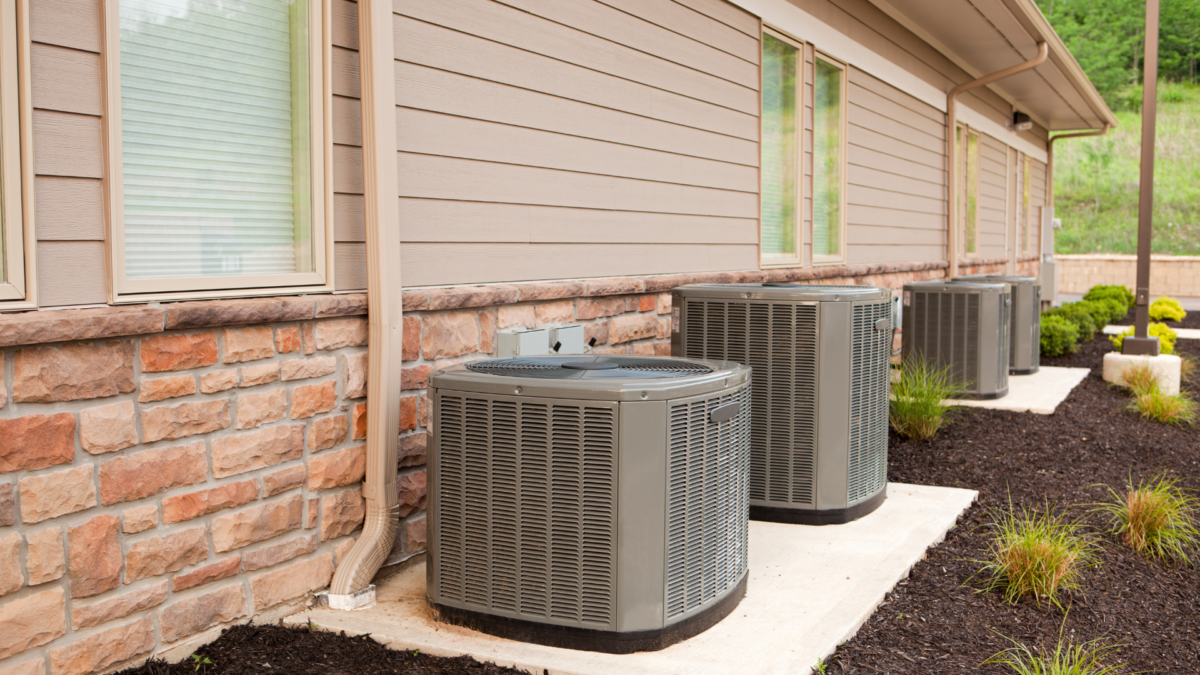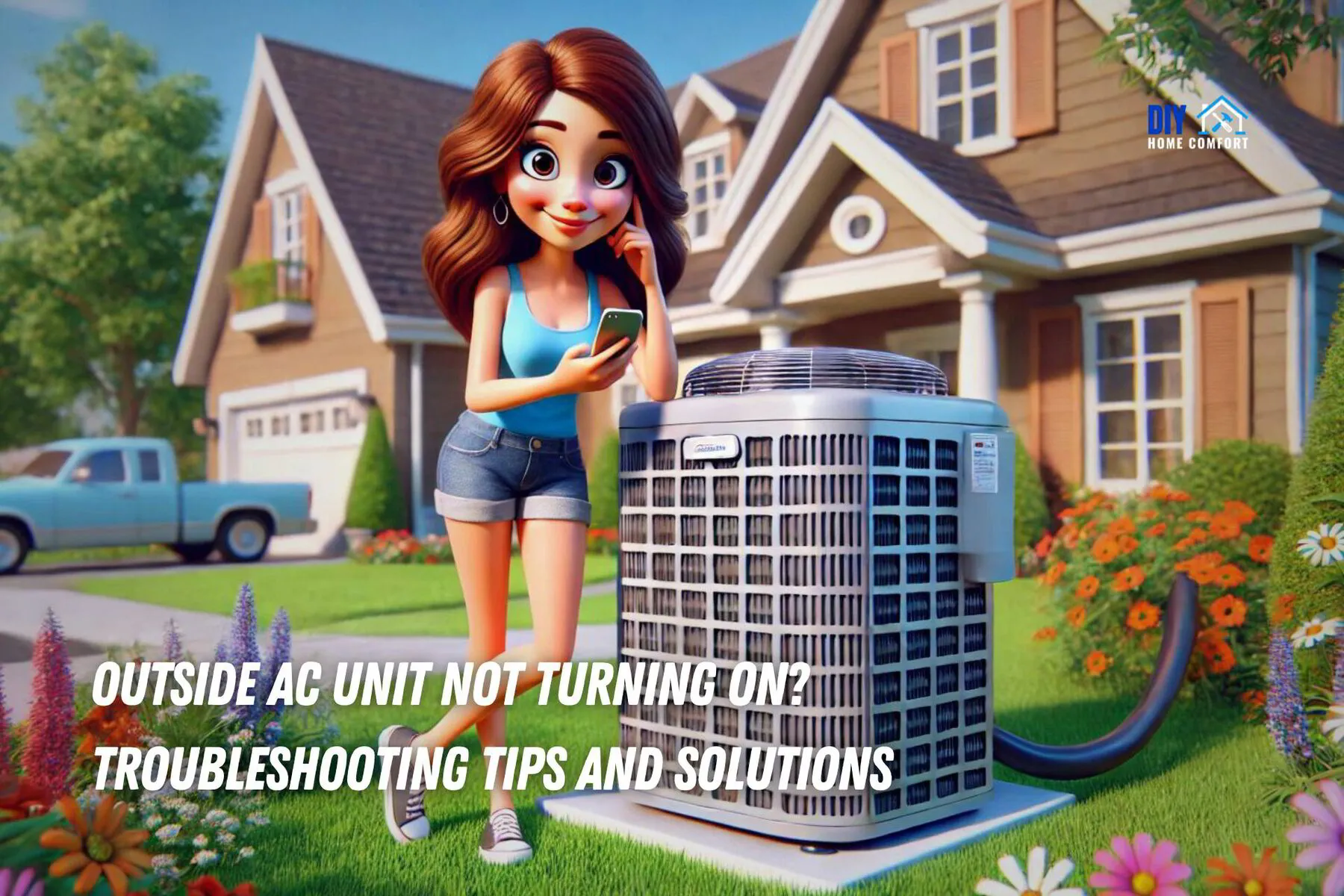Why Is My Outside Ac Unit Not Turning On

It's a sweltering summer day, and you expect your home to be a cool oasis. But then you notice the outside AC unit, the unsung hero of your comfort, is stubbornly refusing to turn on. What's going on? A non-functional outdoor AC unit can be frustrating, but understanding the potential causes can empower you to troubleshoot the issue and decide whether to call a professional.
This guide will walk you through common reasons why your outside AC unit might be failing to start, providing you with a clear understanding of each potential problem and offering guidance on how to address it. Remember, safety is paramount. If you're uncomfortable working with electrical components, always consult a qualified HVAC technician.
Power Issues: The First Suspect
Before diving into complex mechanical problems, let's start with the basics: power supply. A surprisingly large number of AC unit failures are due to simple power-related issues.
1. Tripped Circuit Breaker
What it is: Your AC unit, being a high-power appliance, is connected to a dedicated circuit breaker in your electrical panel. This breaker is designed to trip, or shut off, if it detects an overload of electricity, preventing damage to the unit and potentially preventing fires.
Why it happens: Overloads can occur due to various reasons, such as a power surge, a malfunctioning component within the AC unit drawing excessive current, or simply the breaker aging and becoming more sensitive.
How to check: Locate your electrical panel. It's usually in the basement, garage, or utility room. Open the panel door and look for the breaker labeled "AC," "Air Conditioner," or something similar. If the breaker is in the "off" or "tripped" position (usually indicated by being in the middle), flip it fully to the "off" position and then back to the "on" position.
Important! If the breaker trips immediately again after you reset it, do not keep resetting it. This indicates a serious problem that requires professional attention. Repeatedly resetting a tripped breaker can be dangerous and could damage your AC unit or electrical system.
2. Disconnect Switch Problems
What it is: Near your outside AC unit, you'll find a disconnect switch. This is a safety device that allows you (or a technician) to easily cut off power to the unit for maintenance or repairs. It's usually a pull-out type or a switch in a small metal box.
Why it happens: The disconnect switch can be accidentally switched off, or the contacts within the switch can become corroded or damaged, preventing proper electrical flow.
How to check: Ensure the disconnect switch is in the "on" position. For a pull-out type, make sure it's fully inserted. For a switch in a box, ensure it's flipped to the "on" position. Examine the switch for any signs of damage or corrosion. If you suspect corrosion, consult an electrician to replace the switch.
3. Blown Fuse
What it is: Some AC units have fuses located near the disconnect switch or within the unit itself. Fuses are safety devices that protect against electrical overloads, similar to circuit breakers.
Why it happens: A fuse blows when there's an excessive current flow, protecting the unit from damage.
How to check: Locate the fuse (refer to your AC unit's manual for its location). Visually inspect the fuse. If the wire inside the fuse is broken or the glass is blackened, the fuse is blown and needs to be replaced. Make sure to replace it with a fuse of the exact same amperage rating. Using a fuse with a higher amperage rating can be dangerous.
Thermostat Issues: The Brain of the Operation
Your thermostat acts as the control center for your AC system. If it's not functioning correctly, it can prevent the outside unit from turning on.
1. Thermostat Setting
What it is: The thermostat setting determines whether the AC unit is supposed to be running.
Why it happens: Simple mistakes like accidentally setting the thermostat to "heat" instead of "cool," or setting the temperature too high, can prevent the AC from kicking on.
How to check: Ensure your thermostat is set to "cool" and that the temperature setting is lower than the current room temperature. Try lowering the temperature setting by a few degrees to see if the outside unit starts.
2. Thermostat Batteries
What it is: Many modern thermostats, especially programmable ones, rely on batteries to maintain their settings and operate correctly.
Why it happens: Dead or weak batteries can cause the thermostat to malfunction and prevent it from signaling the AC unit to turn on.
How to check: Replace the batteries in your thermostat with new ones. Refer to your thermostat's manual for instructions on how to replace the batteries.
3. Thermostat Wiring
What it is: The thermostat communicates with the AC unit through a series of wires. If these wires are loose, damaged, or corroded, it can disrupt the communication and prevent the AC from turning on.
Why it happens: Wiring can become loose over time due to vibrations or movement. Corrosion can occur due to moisture. Rodents can also chew on wires.
How to check: Turn off the power to the thermostat at the circuit breaker before inspecting the wiring. Carefully remove the thermostat from the wall and inspect the wires and connections. Look for any loose wires, corrosion, or damage. If you find any issues, consult an HVAC technician or electrician to repair or replace the wiring.
Compressor Problems: The Heart of the AC
The compressor is the heart of your AC system. It's responsible for circulating refrigerant, the substance that absorbs and releases heat. If the compressor fails, the AC unit won't function.
1. Compressor Overload
What it is: The compressor has an internal overload protector that shuts it down if it gets too hot. This is a safety mechanism to prevent damage to the compressor.
Why it happens: Overloads can be caused by high head pressure (due to a dirty condenser coil or restricted airflow), low refrigerant levels, or a failing compressor motor.
How to check: Unfortunately, you can't directly check the compressor overload. However, if you suspect an overload, turn off the AC unit and allow it to cool down for a few hours. Sometimes, the overload protector will reset itself after the compressor cools down. If the unit still doesn't start after cooling down, it's likely a more serious problem.
2. Hard Start Kit Failure
What it is: A hard start kit is an auxiliary component sometimes installed to help the compressor start more easily, especially in older units. It provides a boost of power during startup.
Why it happens: The components within the hard start kit can fail over time, preventing it from assisting the compressor during startup.
How to check: Diagnosing a hard start kit failure typically requires specialized electrical testing equipment. This is best left to a qualified HVAC technician.
3. Compressor Motor Failure
What it is: The compressor is powered by an electric motor. If this motor fails, the compressor won't run.
Why it happens: Motor failures can be caused by overheating, electrical surges, age, or internal mechanical problems.
How to check: Checking the compressor motor requires specialized electrical testing equipment and knowledge. This is definitely a job for a qualified HVAC technician. A failed compressor motor is often a sign that the entire compressor needs to be replaced, which can be a significant expense.
Other Potential Issues
While the above issues are the most common, here are a few other potential causes to consider:
1. Contactor Problems
What it is: The contactor is an electrical switch that controls the power to the compressor and fan motor. It's essentially a relay that turns the unit on and off.
Why it happens: Contactors can become pitted, burned, or corroded over time, preventing them from making proper electrical contact.
How to check: Turn off the power to the AC unit at the disconnect switch before inspecting the contactor. Visually inspect the contactor for any signs of damage or corrosion. A bad contactor often has a burned or melted appearance. Testing a contactor requires a multimeter and knowledge of electrical circuits, so it's best left to a professional.
2. Capacitor Failure
What it is: Capacitors are electrical components that store energy and help start the compressor motor and fan motor. Your AC unit likely has multiple capacitors.
Why it happens: Capacitors can fail due to age, overheating, or electrical surges. A failing capacitor can prevent the motor it's connected to from starting.
How to check: Capacitors store a dangerous electrical charge, even after the power is turned off. Never touch a capacitor without discharging it first using proper safety procedures. Visually inspect the capacitors for any signs of bulging, leaking, or swelling. These are signs of a failed capacitor. Testing a capacitor requires a multimeter and knowledge of electrical circuits, so it's best left to a professional.
3. Dirty Condenser Coils
What it is: The condenser coils are located on the outside unit and are responsible for releasing heat from the refrigerant.
Why it happens: These coils can become covered in dirt, leaves, grass clippings, and other debris, restricting airflow and reducing the unit's ability to release heat. This can cause the compressor to overheat and shut down.
How to check: Visually inspect the condenser coils. If they are dirty, clean them with a garden hose. Avoid using high pressure, as this can damage the delicate fins. Special coil cleaning solutions are also available.
4. Refrigerant Leaks
What it is: Refrigerant is the "blood" of your AC system, carrying heat from inside your home to the outside unit. If there's a leak, the system won't have enough refrigerant to cool effectively, and the compressor may not start.
Why it happens: Leaks can occur due to corrosion, vibration, or damage to the refrigerant lines.
How to check: You can't visually check for refrigerant leaks yourself. Signs of a refrigerant leak include poor cooling performance, ice buildup on the refrigerant lines, and a hissing sound near the unit. If you suspect a refrigerant leak, contact a qualified HVAC technician immediately. Refrigerant is an environmentally regulated substance, and only certified technicians can handle it properly.
When to Call a Professional
While some of the troubleshooting steps outlined above are relatively simple, many AC problems require specialized knowledge and equipment to diagnose and repair. It's always best to err on the side of caution and call a qualified HVAC technician if:
- You are uncomfortable working with electrical components.
- The circuit breaker trips repeatedly after you reset it.
- You suspect a refrigerant leak.
- You suspect a problem with the compressor motor.
- You are unable to identify the cause of the problem.
By understanding the potential causes of a non-functional outside AC unit, you can effectively troubleshoot the issue and make an informed decision about whether to attempt a DIY repair or call a professional. Remember to prioritize safety and consult a qualified HVAC technician when in doubt. Staying cool and comfortable during the summer months is worth the investment in proper AC maintenance and repair.
